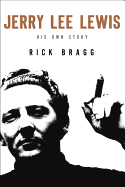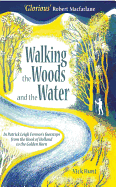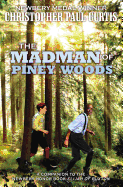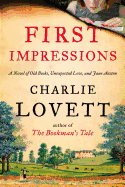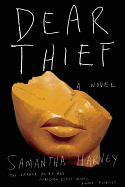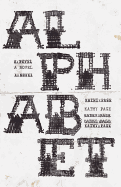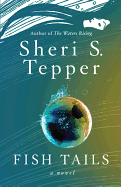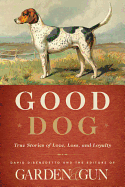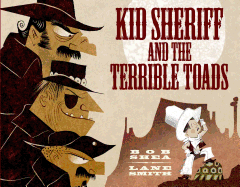A house is normally considered a safe place. In fiction, however, when a house has creaky stairs, rattling shutters, dark attics and basements and trapped secrets that embody the shadowy essence of unnerving spirits, scary becomes even scarier--especially on Halloween.
Shirley Jackson paved the way with her terrifying 1959 novel, The Haunting of Hill House, where four people investigate an 80-year-old house filled with spirits and other unexplained events. (For more about Jackson, see "Rediscover" below.) Richard Matheson expanded that premise in Hell House (1971), where a physicist and two mediums examine a spooky shuttered house in Maine presumably haunted after serving as a domicile for decadence, drugs and alcohol.
The unifying elements of haunted house novels--past and present--seem to be long-buried secrets, demons from the past that need to be confronted and escalating suspense.
This House Is Haunted by John Boyne is set in a country estate in 1860s Norfolk. This Dickens-inspired story centers on a governess who cares for two seemingly parentless children and a malign, supernatural presence that taunts them.
An old carriage house on a sprawling estate invigorates Rebecca Makkai's The Hundred-Year House, where a young couple faces unexpected rumors of buried bodies, family mysteries and the presence of a ghost immortalized in a prominently displayed portrait.
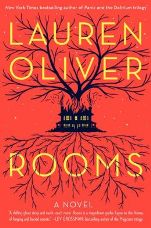
In A Sudden Light, Garth Stein has crafted an atmospheric ghost story set in a rambling Pacific Northwest ancestral estate. This epic tale is part family saga and part mystery, infused with secrets, curses, dark familial legacies and a tragic love affair.
While jack-o'-lanterns, bats and witches are all symbols of Halloween, it's the haunted house, where ghosts and a fear of the unknown collide, that keeps readers captive to the page! --Kathleen Gerard, blogger at Reading Between the Lines
First Impressions: A Novel of Old Books, Unexpected Love, and Jane Austen
by Charlie Lovett
In 2013, Charlie Lovett charmed scores of readers and bibliophiles with The Bookman's Tale, in which he posited that Shakespeare's plays weren't written by the Bard but by someone else. He also threw in a little love and romance. The formula worked admirably, and First Impressions follows in that novel's footsteps. Now the focus is on another famous author, old books, a mystery, young women searching for love and young men hoping to be found.
This is a tale of two women: Jane Austen and Sophie Collingwood. It's also a tale of two time periods, the late 18th century and the present day, as Lovett tells his story in alternating chapters set in Jane's Hampshire and Sophie's Oxfordshire. Jane is hard at work on a novel entitled Elinor and Marriage (which will become Sense and Sensibility). Sophie is trying to decide what to do after getting her graduate degree. Enter two key men: Richard Mansfield, an elderly cleric who becomes a close friend of Jane, and Uncle Bertram, a book collector whom Sophie adores.
When Uncle Bertram dies in mysterious circumstances, Sophie's father handles the sale of his substantial book collection. Hoping to earn enough money to buy back the books she believes should have been her inheritance, Sophie takes a job in an antiquarian bookshop. Two customers request an obscure book--the second edition of Little Book of Allegories by Richard Mansfield--and Sophie finds herself wrapped up in Jane Austen's world. Lovett's tale is a lovely and entertaining one that will involve any reader who relishes the charm (and the charming scent) of old books. --Tom Lavoie, former publisher
Discover: A light and good-hearted piece of historical and present-day fiction that lovers of Austen and antiquarian books will adore.
Beautiful You
by Chuck Palahniuk
Chuck Palahniuk (Choke; Fight Club) often illuminates the dark underbelly of human impulses, pushing the limits of taboo. In Beautiful You, he explores the relationship between sex and mass consumerism through a nobody who becomes a somebody by way orgasmic self-gratification.
Palahniuk begins with the story's grisly, remorseless end--a woman in a courtroom full of gawking men appears to be violated on the witness stand--and then jumps into the past, tracing his way back to that climax (so to speak). That woman is recent law-school graduate Penny Harrigan, who has failed the bar exam twice and now spends her days working as a girl Friday for associates at a law firm. After she trips and falls in front of tech magnate C. Linus Maxwell, the world's most eligible bachelor, he sweeps Penny off her feet and whisks her away to a secluded Parisian penthouse where he takes her to shockingly pleasurable heights using prototypes from his new business venture.
Penny soon discovers she was an unwitting subject in Maxwell's test of Beautiful You products, a line of male-engineered sex toys. His misogynistic plan involves playing on the consumerist impulses of modern women, encouraging them to indulge in their own pleasure (so they'll leave little time for anything else). Horrified, Penny becomes a sort of Erin Brockovich for the women suffering from the throes of erotic self-subjugation.
The fervor with which Palahniuk plays on "girl power" and feminism through his exploration of women's base desires is a role reversal that will certainly shock and provoke controversy. --Nancy Powell, freelance writer and technical consultant
Discover: One man's quest for global domination through the pleasures of erotic self-stimulation and sexual addiction.
Dear Thief
by Samantha Harvey
In Dear Thief, Samantha Harvey (The Wilderness) examines the human need for relationships despite the potential for loss. The unnamed narrator sits down at her desk in December 2001 to begin a letter she will write, in fits and starts, for half a year. She pours the pain and poison of her deepest thoughts out onto the page, simultaneously trying to summon and exorcise her treacherous, long-lost best friend, Nina.
Glamorous, charismatic and selfish, Nina moved in with the narrator, enchanted her infant son, and began a love affair with her husband that ended the marriage. Then she disappeared, silently. It has been 18 years, and the narrator has no idea where Nina is, so she can't mail the letter. Knowing the intended recipient will never read it, the narrator also imagines a life for her, scenes in which Nina reads the epistle and defends her actions, or waves off the narrator's accusations with an amoral hand.
While the love triangle premise seems the perfect setup for melodrama, Harvey never veers into the realm of histrionics. She carefully restricts the narrator's voice to a wry, witty clip that occasionally hints at the fury and grief still smoldering beneath the surface. Without outlining a single tantrum, Harvey still manages to convey the narrator's full range of emotions: the sting of betrayal, the philosophical musings of middle age and a continuing loneliness.
Harvey's engrossing missive may leave readers longing to put pen to paper and resurrect the lost art of handwritten letters--though one hopes to have fewer grievances than Nina's betrayed friend. --Jaclyn Fulwood, blogger at Infinite Reads
Discover: A long, old-fashioned letter from a middle-aged woman to the treacherous friend who wrecked her marriage years ago.
Alphabet
by Kathy Page
In Alphabet, Kathy Page (Paradise and Elsewhere) explores the inner workings of Simon Austen, a complicated, confused and confusing criminal sentenced to life in prison for murdering his girlfriend. Tattooed across Austen's body are words he has been called in his lifetime of mistakes: "threat to women," "dumb," "waste of space." They mark him as a criminal and a killer--but they also give some insight into how Simon came to be the man he is today, shaped as much by his mother's abandonment and his experience in foster care when he was a young child as by the crime he committed and by the British penal system of the late 1980s.
Alphabet tracks Austen's time in prison over several years, from the high-security facility where he struggles to show remorse to the rehabilitation clinic where various therapies aim to "cure" him of his dangerous sexual leanings and help him reinvent himself. Page weaves together Austen's complex inner dialogues and accounts of his experiences in prison, revealing him as a multifaceted human being: not a cold-blooded killer, but rather a sympathetic character, struggling to understand that love and friendship are ultimately what free us, not what jail us. Along the way, Alphabet transforms from a novel of crime and punishment into a nuanced psychological profile of a killer, ultimately providing a gut-wrenching reminder of the atrocities contained within institutional walls and the lengths to which we are willing to go in order to protect our innermost selves. --Kerry McHugh, blogger at Entomology of a Bookworm
Discover: A heartbreaking and emotional account of one man's many years in prison as he struggles to discover who he is beneath his secrets.
The Woman Who Borrowed Memories: Selected Stories
by Tove Jansson, transl. by Thomas Teal and Silvester Mazzarella
Known for her hippo-like animals the Moomins, featured in a cartoon strip and many books for children, Finnish author Tove Jansson also wrote novels and short stories for adults, though they were never published in the United States. In this new compilation, NYRB Classics has pulled together 26 short stories from five of her collections (translated from Swedish by Thomas Teal and Silvester Mazzarella), bringing her inventive characters to a wider audience.
Written between 1971 and 1998, most of the stories are set in the Finnish countryside, where the weather plays an important role, almost as if it were another character. Animals and their interactions with humans are also prevalent, and Jansson's scenarios allow something as innocent as a squirrel to undermine the day-to-day routine of a woman living on an island ("The Squirrel") or the taxidermy animals in a museum to take on new life ("The Wolf").
Jansson often twists her plots in surprising ways to leave readers pondering the complexity of human relationships, and her stories end at precise moments, though they're not altogether conclusive. In "The Doll's House," two men who have shared an apartment for 20 years suddenly find themselves at odds as one begins to build an elaborate doll house to fill the long days of his retirement. Tension and jealousy increase, building to an ugly altercation, when another man is enlisted to help. Complex, intriguing and haunting, Jansson's unusual short fiction is bound to enchant an English-speaking audience just as it did a Swedish-speaking one many years ago. --Lee E. Cart, freelance writer and book reviewer
Discover: Offbeat themes and quirky characters in an extensive collection of translated short stories by Finnish author Tove Jansson.
Science Fiction & Fantasy
Fish Tails
by Sheri S. Tepper
Xulai and Abasio venture from village to village looking for other people and for sentient creatures who might want to have children like their own two babies--genetically altered, water-dwelling children--for the future of the planet (never directly named, but obviously Earth). As punishment from its beleaguered planetary spirit, it is destined to be covered in water within the next 200 years.
Fish Tails, Sheri S. Tepper's 35th novel, brings together characters from 11 of her previous works into a science fiction tale with a staggering breadth of vision. The two protagonists are from 1993's A Plague of Angels and 2010's The Waters Rising (the latter of which is more or less a direct prequel to the current volume, as it deals with the same ecological disaster). They gradually win more allies in their goal to populate the planet with a new, modified human race but soon become involved with a galactic civil servant who has an elaborate do-gooder scheme that may turn their plans upside down.
Tepper takes many opportunities to offer social commentary on how we should live: a smaller population that's more in tune with the environment, less reliant on leaders who may be hiding their lack of knowledge behind seemingly wise yet cryptic oracular proclamations, and willing to treat women as human beings rather than baby-raising objects. Despite the spirited tone, Fish Tails has much to say about what kind of people we'll need to be as a species in order to stave off ecological and social disaster. --Rob LeFebvre, freelance writer and editor
Discover: An epic tome with a playful tone that brings much of Tepper's philosophical and narrative work into one fascinating and nuanced parable.
Biography & Memoir
Jerry Lee Lewis: His Own Story
by Rick Bragg
The life of Jerry Lee "The Killer" Lewis is so much more than his signature hard-rocking, stand-up piano performance of "Great Balls of Fire!" and boffing his 13-year-old child-bride cousin. It's the story of a consummate performer with a knack for knowing the next big thing and the talent to capitalize on it. Of course, his seven marriages, taste for whiskey and guns, flirtation with death, flamboyant concerts and scandalous evangelist cousin Jimmy Swaggart haven't hurt his celebrity and fortune nor prevented his early induction into the Rock and Roll Hall of Fame.
Lewis is a "legend" who really is a legend, and he spent a couple of summers telling his story to the right guy. In Jerry Lee Lewis: His Own Story, Pulitzer Prize–winning journalist, author and professor Rick Bragg (All Over but the Shoutin') synthesizes Lewis's interviews and historical records to capture all the chords and chaos of the Killer's long life. This sweeping biography covers a lot of ground to portray a man in his late 70s who started playing piano at age five and did his first paid performance at age 13 at a car dealership. Lewis has had his fingers in nearly every piece of the 20th century's popular-music pie, and so Bragg's biography becomes not just the history of the man but a history of modern American music, the South and even the Pentecostal Church.
In his introduction, Bragg neatly sums up Lewis's life: "It was like any life, really, but with the dull parts taken out." If you can read only one history of rock and roll, this is the one. --Bruce Jacobs, founding partner Watermark Books & Cafe, Wichita, Kan.
Discover: Southern writer Rick Bragg's take on the iconic Louisiana wild man--one of the best rock biographies ever.
History
The Unsubstantial Air: American Fliers in the First World War
by Samuel Hynes
Aerial combat during the First World War is often romanticized as aristocratic aces dueling each other in biplanes high above the trenches, a sort of chivalrous gentleman's sport as glamorous as it was dangerous. This image is accurate but vastly oversimplified--it ignores the air war's steep toll in lives and psychological damage, and the very unglamorous dangers involved in every aspect of early aviation. Samuel Hynes (Flights of Passage; The Soldiers' Tale), a World War II marine pilot, explores the full scope of the World War I air war as experienced by American pilots in The Unsubstantial Air.
The industrial carnage of the Great War largely destroyed the notion of individual honor earned on the battlefield. Mass infantry attacks, artillery barrages and static trench warfare were unappealing to the young American men who joined the Air Service in 1917. Often wealthy Ivy League students (including Quentin Roosevelt, son of Theodore Roosevelt), many had followed the published exploits of French pilots and earlier American volunteers. They saw fighter pilots as a continuation of the old cavalry, the last opportunity for individual heroism on the modern battlefield.
Hynes uses personal correspondence, journals and unit records to track the transformative journeys of these privileged college students turned airmen. They faced tedious (but still dangerous) training, a monotonous wait for planes, undesirable assignments to less-prestigious bombing and observation squadrons and the horrors of actual combat. Hynes deftly interweaves these individual stories and the larger war effort, making The Unsubstantial Air a joy for both history and biography readers. --Tobias Mutter, freelance reviewer
Discover: The personal experiences of American pilots in World War I.
Travel Literature
Walking the Woods and the Water
by Nick Hunt
Travel in the 21st century often involves extensive research: the cheapest plane tickets, the most charming bed-and-breakfasts, the must-see sights in each city. But when Nick Hunt set out in 2011 to walk from the Hook of Holland to the Golden Horn of Istanbul, he deliberately avoided research. Aside from booking accommodations through friends (and the occasional couch-surfing website), Hunt confined his inquiries to a set of battered books: Patrick "Paddy" Leigh Fermor's account of his own journey along the same route in 1933.
A longtime admirer of Leigh Fermor, Hunt retraced his predecessor's journey as closely as possible, even when it meant taking a few detours or sleeping rough at the base of a castle's walls. He chronicles his trip in lucid, keen prose, describing the varied climates, terrains, cultures and languages of the eight countries he visited and sharing anecdotes of the kind strangers (many of them fellow Leigh Fermor fans) who opened their homes to him. Along the way, Hunt shares excerpts from Leigh Fermor's memoirs and journals, and reflects on the changes--industrial, political and social--that transformed the landscape between the time of Leigh Fermor's walk and his own. He muses on the particular joys and struggles of walking and solitude, sharing tales of blisters and snowstorms alongside stories of convivial evenings spent in the company of new friends.
A meditation on walking and a loving homage to a fellow wanderer, Walking the Woods and the Water is a treat for armchair travelers, serious walkers and Leigh Fermor fans alike. --Katie Noah Gibson, blogger at Cakes, Tea and Dreams
Discover: A young Englishman's entertaining account of his walk from Holland to Istanbul, in the steps of Patrick Leigh Fermor.
Pets
Good Dog: True Stories of Love, Loss, and Loyalty
by David DiBenedetto and the editors of Garden & Gun
Garden & Gun is a magazine devoted to the best of Southern food, music, arts, literature and sports. The "Good Dog" column, which highlights stories about purebreds and mutts--good or bad, living or dead--has become a reader favorite. In Good Dog: True Stories of Love, Loss, and Loyalty, David DiBenedetto and the editors of Garden & Gun offer a compilation of the most memorable essays and some new additions.
The 51 stories in the anthology are by notable writers--novelists, journalists and humorists--most of whom have a connection to the South and whose lives have been affected, for better or worse, by dogs. The anthology is broken down into five sections: The Troublemakers, Afield, Man's Best Friend, Family Ties and Life Lessons.
Some essays are profound; Mary Lou Bendrick's "Last Rites" details the experience of her dog's grand exit from the world. Straddling the line between pathos and humor are essays such as "Licked to Death by a Pit Bull," in which Bronwen Dickey fights the prejudice against a notorious "bully breed." Comic relief infuses others; in "My Mother, My Dog," Donna Levine believes her cockapoo is her mother reincarnated, noting their relationship "has never been better."
Regardless of whether the pets have been adopted from an animal rescue or purchased from a breeder, acquired to offer companionship or protection, each story conveys the endearing sense of love, loyalty and resilience that comes from sharing a life with dogs. --Kathleen Gerard, blogger at Reading Between the Lines
Discover: A range of personal essays about dogs and why we love them--no matter what.
Children's & Young Adult
The Madman of Piney Woods
by Christopher Paul Curtis
Christopher Paul Curtis revisits the Ontario, Canada, setting (40 years later) of his Newbery Honor book Elijah of Buxton with this multilayered companion novel that stands soundly on its own.
Set in 1901, the story alternates between the first-person narratives of two 13-year-old boys and the woods (and other factors) that separate them. Benjamin "Benji" Alston, an aspiring journalist, lives in Buxton, which was settled by former slaves. Scientifically minded Alvin "Red" Stockard hails from Chatham, where he's being raised by his prejudiced Irish grandmother. When the boys attend a forensics competition, their chance meeting blossoms into an uncommon and remarkable friendship. Both boys are fascinated and terrified of their local myths: Buxton's Madman of Piney Woods and Chatham's South Woods Lion Man. As Red and Benji's friendship deepens, the boys each encounter an apparent wild man in the woods. Could the Lion Man and the Madman be the same person? What could drive a man to live in such solitude?
Curtis tackles racism, prejudice, alcoholism and child abuse in startlingly honest light. Benji and Red are at an age where they're grappling with how to confront these issues. The truth behind the Madman brings to light further issues of war and heroism. Despite the gravity of these themes, Curtis balances the tale with humor and levity. His sense of place, particularly in Piney Woods, will enchant readers. The author captures the spirit of adventure and opportunity that comes with being young, as well as his characters' innate sense of justice. --Kyla Paterno, reviewer
Discover: Two 13-year-old boys from opposite sides of the Piney Woods confront its legendary madman.
100 Things that Make Me Happy
by Amy Schwartz
In this joyful picture book, Amy Schwartz (The Purple Coat) introduces a smile-inducing rhyming list of 100 favorite things and a diverse cast of children to demonstrate them.
She opens with a pairing of indoor/outdoor images. On the left, three children model "red socks," another child engages with "building blocks," and a redheaded girl holds a mixing bowl, "licking the spoon" as her puppy watches hopefully; a nighttime image that takes up two-thirds of the right-hand page depicts "the man in the moon" (smiling, naturally), while a blonde girl and her dog gaze skyward, and, below, one child models "an orange hat" and another holds "an orange cat." The swooping type in orange connects these latter two images, just as the other rhyming couplets appear in matching type, color and font. Schwartz's array of patterns and colors will hold children's interest and move their eyes down the page. The yellow polka-dot sheets on a "cozy bed," for instance, draw out the slice of "raisin bread" a child is holding in the next vignette. One of the standout double-page spreads pairs a full-page image of "city lights" as a child drifts off to sleep with an urban skyline outside the window, while opposite, a father and child camp on a hilltop under "starry nights."
Unlike Schwartz's What James Likes Best, readers do not follow the same characters through their day. Instead, the book's ingenious design and rhymes lead them through the pages, and it's guaranteed to spark children's own lists of happy things. --Jennifer M. Brown, children's editor, Shelf Awareness
Discover: A smile-inducing, cheerfully illustrated, rhyming list of children's favorite things.
Kid Sheriff and the Terrible Toads
by Bob Shea, illus. by Lane Smith
The team behind Big Plans introduces a charming, disarming boy hero in a ten-gallon hat who rides into town on a tortoise to save the day.
Lane Smith (Grandpa Green) sets the stage in a desert-toned palette with flecks of ruby red in the stones that frame a Wild West town and the toads and lizards that live there. "Drywater Gulch had a toad problem," begins Bob Shea's (Dinosaur vs. School) narrative. But not the kind you might think. It's "the never-say-thank-you outlaw kind of toad." A trio of bad guys kissing cattle and hauling loot from a bank jeer at a fleeing Mayor McMuffin. Luckily, "hope rode into town. Slowly. On a tortoise." The bird turns its head in the following scene, to watch a boy in a ten-gallon hat pass by ("Give him a minute"). After a litany of questions from the mayor ("Can you handle a shooting iron?... Stay up past eight?"), and a "nope" to each, McMuffin asks the boy, "Well then, what makes you a sheriff?" Ryan answers, "I know a really lot about dinosaurs." The boy blames the giant crater in the bank wall on T. rex, and a stagecoach robbery on velociraptors.
Children will love being in on the joke and will lap up the dinosaur trivia, as the Toad brothers grow increasingly upset at prehistoric critters getting credit for their crimes. In a brilliant spread, the boy (and tortoise) measures the jail door to figure out how to corral the giant criminals, while the bow-legged brothers' legs frame the scene. Yee-haw! --Jennifer M. Brown, children's editor, Shelf Awareness
Discover: A tortoise-riding boy sheriff and dinosaur buff who outsmarts a trio of bandit brothers in the Wild West.


